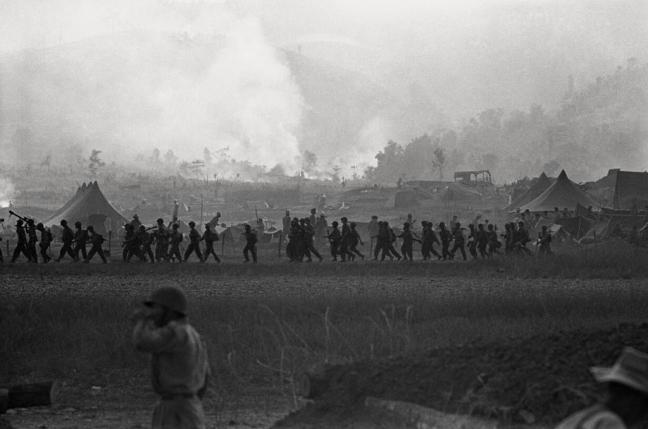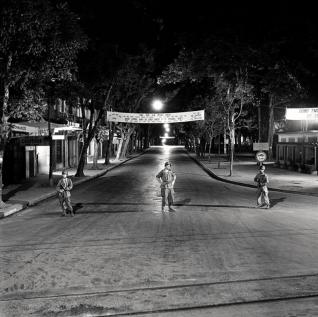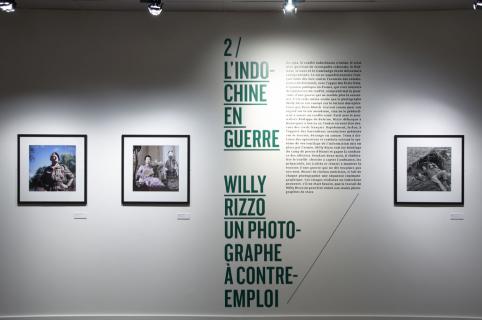The photographer Willy Rizzo first gained recognition for his « celebrity » photographs. He began his career in Paris working for magazines such as Ciné Mondial or Point de Vue and quickly made photographing celebrities his speciality. Working under the protection and on the advice of the photographer Gaston Paris, he cycled between the studios of Billancourt, Joinville and the Buttes-Chaumont, taking shots of all of the stars of French cinema who quickly became fans of his work.
After a report from the Tunisian war and his coverage of the Nuremberg trials, he was sent to Cannes in 1946 by France Dimanche to cover the first ever film festival. He brought back an impressive brace of princesses, playboys, starlets and stars using his Zeiss Sonnar 180.
In the U.S., where he worked for the Black-Star agency, he lived an urban life, covering Edith Piaf singing at « Versailles » and afterwards with her friends at « El Morocco ». He kept a close eye on the work of Richard Avedon and Erwin Blumenfeld. He then discovered the West coast and photographed actors such as Gregory Peck, Richard Widmark, Gary Cooper, and Anne Baxter...
He moved back to France in 1949 to participate in the launch of Paris-Match
. He was one of the few photographers at the time to work in colour and the first ever cover of the weekly was graced with one of his shots.
For 20 years, Willy Rizzo went on to publish celebrity and fashion reportage until he actually became a legend. Walter Rizzoto, the reporter in « Paris Flash », in the Tintin comic book Les bijoux de la Castafiore
, is a blend of Willy Rizzo and his colleague Walter Carone.
Willy Rizzo was not predestined to be a war reporter, but the idea of going against type was what appealed to Paris-Match
.
In 1952, Philippe Boegner, the magazine’s director, tired of the official photographs supplied by the French army of the war in Indochina decided to send a fresh eye into the field.
Willy Rizzo along with the journalist Philippe de Baleine arrived in Indochina, in Hanoi to be precise, travelling from there to Son-La in Tonking, where the French civilians were being evacuated. The duo very quickly irritated or amused, but they were the absolute opposite to the adrenalin junkies already on the ground, Paris-Match got what it wanted.
The tandem was kept away from combat by the army’s cordoned-off system so Willy Rizzo followed the press camp briefings and gained the trust of the officers. For two months, he depicted the conflict, trying to capture the atmosphere, the preparations, and the sidelines and managed to show the tension of a war that had not yet admitted to being one.
Taking his inspiration from his Hollywood days, Willy Rizzo made each photograph a cinematographic experience. Na San is a panoramic, a battle ground rising out of fog and smoke. The bodies are tense and on edge. Showing the scene before the battle through its atmosphere and ambivalence is worth so much more than showing bad scenes of fighting. Once the fighting starts, you can’t see anything.
Willy Rizzo thus highlighted Hanoi under curfew. Adding extra lighting made this series published by Paris-Match
in 1952 (n°194 , December 6th 1952) a dark, anxiety-ridden narrative. The anguish of the conflict is counterbalanced by an unpublished and immensely touching series of photos at a Vietminh prisoner of war camp. We see them doing everyday chores ; doing laundry, washing themselves. They are no longer « bandits », nor agents of subversion, they are just like us. This series proves, if need be, that Willy Rizzo’s work goes well beyond celebrity and the jet-set. The composition and lighting are everything, the tension of the subjects palpable. Willy Rizzo knows how to create original and believable situations. For this alone, it is time to reconsider the work of Willy Rizzo.









